Her Majesty’s Colonial Ship (HMCS) Protector was a flat-iron gunboat purchased by the South Australian colonial government in response to several ‘Russian Scares’ that plagued Great Britain’s Australian colonies during the 1860s, 1870s and early 1880s. Specifically, Protector was intended to defend South Australia’s coastal ports and municipalities from seaborne assault, and functioned as the only naval asset in a larger colonial coastal defence system that comprised shore-based artillery batteries (such as Fort Largs and Fort Glanville), a submarine mining (or torpedo) station at the North Arm in Port Adelaide, and local volunteer militias. Protector arrived in South Australia in September 1884 and subsequently served in three major conflicts: the Yihetuan Movement (Boxer Rebellion), First World War, and—under civilian ownership—Second World War.
Russian Scares
The Victorian gold rushes of the 1840s and 1850s created apprehension within the Australian colonies that foreign powers might seize the opportunity to invade the continent’s population centres and take its newfound mineral wealth by force. This climate of fear was exacerbated by long-simmering tensions between Great Britain and Imperial Russia in the wake of the Crimean War. Specific concerns about Russian designs on Australia’s major port cities seemed to be borne out by the unannounced arrival at Melbourne, Sydney and Hobart of vessels associated with Russia’s Pacific Fleet. In the first instance, the Russian frigate Svetlana entered Port Phillip Bay in 1862, and after firing a salute, did not receive a response because the Australian fortifications lacked sufficient powder for their artillery. The flagship of Russia’s Pacific Fleet, the corvette Bogatyr, visited Melbourne and Sydney the following year—and again managed to approach Port Phillip Bay unnoticed and unchallenged. In 1870, the Russian corvette Boyarin arrived unannounced in the Derwent River, sparking rumours than an invasion of Hobart and other Australian port cities was imminent. The actual reason for Boyarin’s visit was humanitarian (the ship’s purser was gravely ill, and shipboard provisions were in need of replenishment), and its crew was ultimately feted by Hobart’s citizens. Similar outcomes resulted from the other Russian naval visits, and fears of assault and invasion ultimately proved unwarranted. Nevertheless, Australians generally remained suspicious of Russia’s intentions and, under British advice, began to upgrade their colonial defence networks.
South Australia’s initiative to develop its own naval capability was spurred on by two additional factors. Colonel William Jervois, a British military engineer commissioned during the 1870s to report on the defence capabilities of the Australian colonies, opined that Russian naval forces would—in the event of war with Great Britain—harass South Australia’s merchant shipping in an effort to destroy its economy. This assessment was punctuated by the arrival of yet another unannounced Russian naval contingent—the vessels Afrika, Vestnik and Plastoun—at Holdfast Bay in February 1882. By this time, South Australia’s parliament had ordered the creation of a naval force, and entered into a contract for the construction of a specially-designed warship that could operate within the shallow, confined waters of Spencer Gulf and Gulf St. Vincent with armament sufficient to engage commerce raiders and smaller classes of naval vessel.
A Warship for South Australia
At Jervois’ suggestion, the South Australian government hired British firm Sir William Armstrong & Co. of Newcastle-on-Tyne to build its new naval vessel. Protector was constructed according to a ‘flat-iron’ gunboat design first introduced during the Crimean War, and originally estimated to cost between £40,000 and £50,000. It was the largest gunboat ordered by the Australian colonies, with an overall length of 188 feet (57.30 metres), and beam and draught of 30 feet (9.14 metres) and 12 feet, 6 inches (3.81 metres), respectively. Its displacement was 920 tons. The vessel’s two compound surface-condensing engines generated 1,500 horsepower to attain a top speed of 14 knots (26 kilometres per hour). In an effort to conserve coal, Protector’s designers originally outfitted the vessel with optional auxiliary propulsion comprising a schooner rig with flying square topsails.
Protector was incredibly well armed for its size, and featured an array of weaponry ranging from large-calibre artillery to small arms including cutlasses, boarding pikes, Martini-Henry rifles, and revolvers. As built, the ship’s fixed armament included one bow-mounted 8-inch (203-millimetre) Armstrong rifled breech-loading gun, five 6-inch (152-millimetre) Woolwich-Armstrong rifled breech-loading guns, four 3-pounder Hotchkiss QF cannon, and five 10-barrel Gatling machine guns. An additional defensive measure in the form of a 1 ¼-inch (32-millimetre) thick armour belt was installed around the hull along the waterline. Due in part to its heavy armament and robust hull, Protector was ultimately classified a light cruiser.
Protector’s construction commenced on 8 December 1882, and the initial time allocated for completion was 14 months. However, at the request of the South Australian government, alterations and additions were incorporated into the original design, including provision for electrical lighting, and the installation of steam-powered steering gear and disconnecting propellers. One particular addition, the construction of a navigation bridge over the vessel’s conning tower, was recommended by the builder. Ultimately, these modifications delayed Protector’s launch until 27 December 1883. They also increased the final cost of the vessel to £65,000. Final outfitting and sea trials further protracted handover to its inaugural naval crew, which didn’t occur until June 1884. Protector finally departed for Australia on 27 June 1884. At the helm was Commander John Cotterell Phillip Walcot of the British Royal Navy, who oversaw a crew of 52 ratings, five officers and two warrant officers.
Sailing via Gibraltar, Malta, Port Said, the Suez Canal, Aden and Colombo, Protector arrived in Albany, Western Australia towards the end of September 1884. The voyage between the Arabian Peninsula and Sri Lanka proved particularly rough, and the vessel required an engine overhaul upon arriving in Colombo. In addition, Officer’s Servant Edwin Palmer developed an unspecified ‘serious’ illness and was put ashore. The final leg of the voyage across the Indian Ocean was hampered by contrary winds and the death of a crewman from Typhoid fever—an ailment that appears to have been quickly contained and did not affect the other crew and officers. After taking on coal and other stores, Protector departed King George Sound on 24 September 1884 and arrived at Port Adelaide six days later.
The Yihetuan Movement
For the remainder of the nineteenth century, Protector’s career was largely uneventful. While the South Australian government managed to acquire its own warship, the colony’s coffers lacked sufficient money to regularly deploy the vessel on coastal patrols. As a consequence, Protector was normally stationed just outside the Port River at the Largs Bay anchorage—oftentimes in close proximity to the reformatory hulk Fitzjames, from which seven boys were ‘recruited’ to the warship’s crew in the mid-1880s. Protector crewmen assisted in extinguishing fires on the Port Adelaide waterfront on a handful of occasions, helped lay a telegraph cable between the South Australian mainland and Althorpes Island, and in 1888—following the shipwreck of the barque Guldax at Normanville and clipper ship Star of Greece at Port Willunga—assumed responsibility for training and maintenance of South Australia’s life-saving service, which had languished since the early 1860s. A handful of crewmen from Protector were also trained in submarine mining (torpedo) equipment and tactics, and regularly detached to the North Arm Torpedo Station on the Port River.
In August 1900, the South Australian government offered Protector and its crew to assist the Imperial British government and other Western powers in their suppression of the Yihetuan Movement in China. The uprising, dubbed the ‘Boxer Rebellion’ in the English language, was the result of a trade imbalance between China and merchants from the United States and Europe (particularly Great Britain) that was tilted heavily in the West’s favour, as well as extensive land acquisition and other actions by Western merchants that impinged upon China’s sovereignty. Anti-European secret societies formed within China as Western influence increased; the most violent and popular of these groups was alternately called the I-ho-ch’uan (Righteous and Harmonious Fists) or Yihetuan (Militia United in Righteousness). Members of the society were dubbed ‘Boxers’ by European and American media, and gave the ‘Boxer Rebellion’ its name.
Protector departed Port Adelaide for China on 6 August 1900, calling at Sydney and then Brisbane, where Captain William Rooke Creswell, a former British naval officer and Commandant of the Queensland Maritime Defence Force, boarded the vessel and assumed command. Creswell previously served aboard Protector as its First Lieutenant, and later as the Commandant of South Australia’s colonial navy. Protector’s captain at the time, Commander Chapman James Clare, agreed to relinquish command to Creswell at the suggestion of the British government (who wanted an officer with experience in the Royal Navy in charge as a matter of legal protocol); however, the South Australian government did not accede to the British Admiralty’s additional request that the vessel be crewed entirely by Royal Navy seamen and officers. Temporarily commissioned into British naval service as HMS Protector, the ship departed Brisbane on 15 August under the White Ensign.
Arriving at Hong Kong on 9 September 1900, Protector took on water and coal and had its hull cleaned before departing for Woosung ten days later. Over the course of the next two months, it travelled first to Shanghai and then Shan Hai Kuan, the port city where the Yihetuan Movement began. When Protector arrived at Shan Hai Kuan, preparations for a naval and amphibious assault on the city were well underway. Just as it appeared the ship’s crew would finally get to fire their guns in anger, the Yihetuan forces retreated inland and their coastal fortifications surrendered. Protector spent the remainder of its deployment in Chinese waters conducting surveys and acting as a despatch vessel. It departed for Australia on 24 November 1900 and arrived in Port Adelaide at the beginning of January 1901 to much fanfare. While en route, Protector stopped at Sydney to participate in ceremonies marking the inauguration of the Commonwealth of Australia.
Later Years
Following Federation, Protector was transferred to the Commonwealth Naval Force, and served primarily at Sydney as a training vessel for the Naval Militia Forces of New South Wales, Victoria and South Australia. From this point, the warship’s connection to South Australia gradually diminished; it occasionally took up its former station at Largs Bay to train South Australian naval militia, but spent increasingly more time in the waters of New South Wales and Victoria. In 1905, Protector collected Tasmania’s former colonial torpedo boat, TB 191, in Hobart and towed it to Port Adelaide, where it commenced service as South Australia’s only remaining permanent naval asset. A former Protector crewman, Chief Petty Officer Henry Perry, was assigned responsibility for TB 191 as part of his duties as Caretaker of the North Arm Torpedo Station.
In 1911, Protector was integrated into the Royal Australian Navy along with several other colonial Australian naval vessels. Two years later, it was assigned to the naval facility in Williamstown, Victoria, where it served as a tender to the depot ship HMAS Cerberus. During the First World War, Protector served as a tender to the Australian submarines AE1 and AE2, guarded the port of Rabaul in New Guinea, and conducted minesweeping patrols in Australia’s coastal waters. It also reported on the wreck of the Imperial German Navy cruiser SMS Emden, which had been forced ashore at the Cocos-Keeling Islands during an engagement with the Australian warship HMAS Sydney (I) in November 1914. Protector completed its naval career as a tender at Flinders Naval Depot in Western Port, Victoria.
In 1924, Protector was decommissioned from naval service, purchased by civilian interests, and converted for the storage and transport of bulk commodities. After a 19-year hiatus, it was requisitioned by the U.S. Army during the Second World War and reactivated for military service, but collided with another vessel shortly thereafter and was condemned at the Queensland port of Gladstone. The hulk was purchased in 1944 and installed as a breakwater the following year at Heron Island on the Great Barrier Reef.
Protector Today
Since its arrival at Heron Island in 1945, Protector has evolved into an icon of the local landscape and is regularly visited by patrons of Heron Island Resort, as well as staff and visiting scholars affiliated with the University of Queensland’s Heron Island Research Station. In October 2013, a team of researchers travelled to Heron Island to conduct a comprehensive archaeological survey of the ship’s remnants. This ongoing project is a collaborative effort between the South Australian Maritime Museum (SAMM), the University of Adelaide’s Australian Centre for Visual Technologies (ACVT), and the Western Australian Museum. It will utilise a combination of digital video, 3D photogrammetry, and laser scanning to capture Protector in the virtual realm, as the majority of the vessel’s extant, articulated hull is exposed above water during low tide. These cutting-edge techniques were complimented by archaeological surveying methods, which were employed to physically document the lowermost portions of articulated hull, collapsed hull sections, and other site features that are largely or completely submerged. ACVT is currently developing software capable of generating 3D digital and physical models of historic objects from archival photographs, and is using Protector as a test case. Archaeological and 3D digital data obtained during the survey will be used in conjunction with the digital models generated by ACVT to present a complete record of the vessel’s ‘evolution’ from battleship to breakwater.
The project was developed to support a SAMM exhibition designed to coincide with the centenary of the outbreak of the First World War. The exhibition will highlight Protector to tell the story of South Australia’s naval and maritime involvement in the conflict. The digital and physical models are key components of the exhibition and will illustrate Protector at critical phases in its military and non-military careers. In addition, these models—in conjunction with other archaeological data collected during the field investigation—will be used to explore and answer questions about the vessel’s construction, conversion, modification, deterioration, and site formation. Finally, data derived from this project may enable relevant government agencies to effectively assess Protector’s surviving fabric, determine its heritage significance, and develop future plans for its management and interpretation. It will also ensure a three-dimensional record of the surviving hull in perpetuity—an issue of critical importance, given that Protector is the last vessel of its kind anywhere in the world.


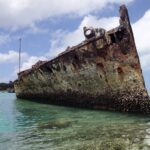

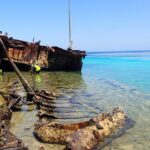

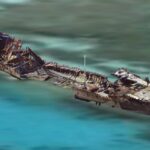
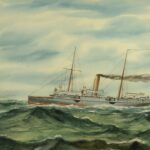
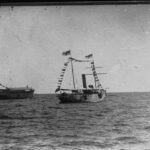
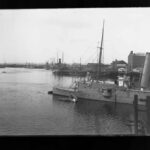
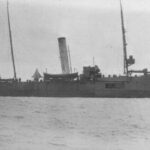
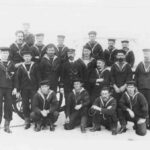
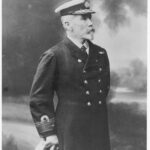
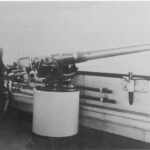


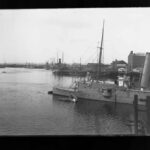
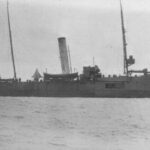
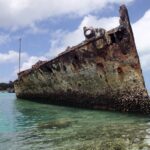
Through recently released hospital records I have just found out that my Gr Grandfather, Alphonse Fabri, after RN service in Egypt was employed as a “Body Servant” on the Protector in 1889.
Wonder if there would be any resources that would explain more about who employed him, when and what the role meant? At the time of the hospital admission he was 23 years old and had only arrived in the Colony from Malta about 1 year beforehand.
Hi Tania,
I’m going to forward this enquiry to the curators at the South Australian Maritime Museum, who know a lot more about the ‘Protector’ than me.
My grandfather George Malcolm Douglas Stuart was a stoker on the HMCS Protector and went to China on the Protector as HMS Protector. He does not seem to have been recognised as a crew member of Protector. Was he, or was he not, a crew member. He was not recognised as such during the celebrations of the awarding “China medals” at Port Adelaide.
Hi Kenneth,
I’d suggest getting in touch with the SA Maritime Museum on this one. They have photographs of crew members and will know more about the location of any official crew lists, if there are any on record.
http://maritime.history.sa.gov.au/contact/
Hi I am trying to find any information on my grandfather William Stephen Griffiths Service Number 6639. Apparently served on the HMAS Cerberus Navy ship, formerly HMAS Protector but had an accident on the ship, where he was a stoker and the boiler blew up in his face and he received terrible wounds to the face because of it. I am trying to trace and records that anyone might have. It would have been between about 1918 to 1928.
I’d try the National Archives Jodie, you should be able to find his service records there: https://discoveringanzacs.naa.gov.au/Search/Persons?FirstName=William&La…
Hi,
I have friends that have 1 of the Lifboats from the Protector. They have discovered the ID markings carved in on the bow
41 SIR 2245 on 1 side and on the other side is 44 PERS.
The boat did the first charting of the Murray River between Yarawonga and Renmark.
Do you know how we can confirm if this is the lifeboat from the Protector.
Cheers
David Griffin
one of the life boats was converted to a murray river boat and lived at murray bridge until it was stripped and eventually cut up into sections . the transome and sections are in the council garden,main street ,Goolwa ,SA . whith a plauque etc . I have photos of the boat after it wa s stripped . I think it was called the Iluka ,when a river boat. My grandfather Dr B H Morris was the fleet surgeon to the boxer rebellion
Hi David,
Thanks for getting in touch, unfortunately James, who is our resident expert, is on leave currently and I don’t know the answer to your question. I’ll get in touch with the South Australian Maritime Museum curators and get back to you.
Catherine
As is often the case, when you think you know a reasonable amount about a subject, you frequently find there is a whole lot more to learn from someone who has researched the details quite thoroughly. What a comprehensive and interesting story you’ve revealed on Protector James. I look forward to the SAMM exhibition on the vessel when it comes around.
Hi Bill,
Thanks very much for the additional information! As it turns out, I’ve recently discovered that Protector did indeed fire its guns in anger on one occasion. During the First World War, while Protector was stationed as a guard ship at the port of Rabaul in New Guinea, it encountered the armed German steamer Madang. Madang fired on Protector with its bow gun, but missed. Protector responded with one of its 4-inch guns, holed Madang’s stern, and took the German vessel into custody.
On Proclamation Day 1885, The Protector was moored off of Glenelg SA, firing a salute from her stern gun (which is now located in Jenkins St, Birkenhead) as part of the celebrations.. The Gun Captain, Phineas Davies, was firing blank rounds. It was a requirement to wipe out the breach between rounds to ensure no embers remained that could possibly ignite the next round before the breach was closed and locked. Unfortunately, this was not done and a round exploded in the open breach, killing Phineas Davies and breaking the arm and shoulder of the loader.. So although the Protector never fired a round in anger, her stern gun did indeed take a life. A memorial to Mr Davies is located at the Naval Memorial in Adelaide.